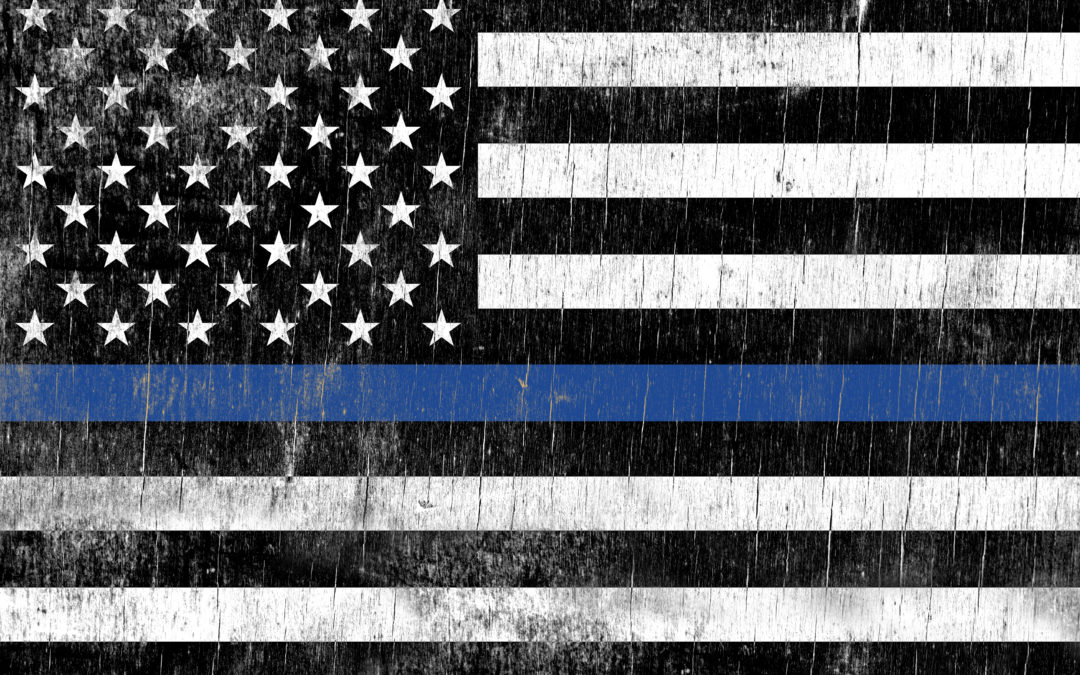
Beyond The Blue: Felony Killings of American Law Enforcement, 2016-2017
Photo © Enterlinedesign | Dreamstime.com
By Kadambari M. Wade
More law enforcement officers were killed in the line of duty in May than in any other month last year as a result of felonious incidents. More law enforcement officers were also feloniously killed on a Friday, than on any other day of the week in 2017. We’re publishing this piece on a Friday, in May, during National Police Week, as a gentle reminder: While being a law enforcement officer isn’t necessarily called the most “dangerous job in America” (in terms of sheer numbers), it is probably the only legal peacetime job out there where you wake up and leave for work every morning, knowing someone may intentionally try and kill you that day. And the next. And every single day thereafter. Day in, day out. Week in, week out, year in, year out. Or at least, try their best to do so.
In 2016, the last year for which there is complete data for reported assaults on law enforcement officers in the line of duty, the FBI collected assault data from 12,421 law enforcement agencies that employed 586,446 officers who, among them, serve more than 268.2 million people, comprising 83% of the U.S. population. According to this data, 57,180 officers were assaulted in the line of duty in 2016, a rate of 9.8 assaults per 100 sworn officers. Of the 57,180 officers who were assaulted, 16,535 or 28.9% sustained injuries. By any yardstick, when you factor in the rate of assault and injury on duty, being in law enforcement gets catapulted to the top of any “most dangerous jobs in America” list.
However, this piece has a specific focus; it is a comparison of officers that were killed in the line of duty in 2016 and 2017 in felonious incidents — when someone intended to kill them because they wore a badge. In 2016, 66 officers were feloniously killed in the line of duty, while 2017 saw 46 officers feloniously killed. Seventeen of those that died in 2016 were ambushed.
The first known law enforcement officer believed to have been feloniously killed in the line of duty in the United States of America was a veteran, killed less than a decade after the end of the Revolutionary War he fought in. Columbia County (NY) Sheriff Cornelius Hogeboom was shot on Oct. 22, 1791, as he attempted to serve a writ of ejectment. His alleged murderers, all 10 of them, were all apparently acquitted.
In the 227 years since his murder, more than 21,540 American law enforcement officers have died in the line of duty, their names engraved in remembrance on the walls of the National Law Enforcement Officers Memorial in Washington, D.C. New names of fallen officers are added every year this week, National Police Week, which comes by in the week of May 15 each year.
While the law enforcement memorial and that 21,500+ number is a stark reminder of how many Americans sacrifice everything to protect and serve, we decided, as mentioned, to limit our focus in this particular piece to officers that were victims of criminal homicide while acting in a law enforcement capacity, i.e. murdered on the job, for doing their job.
We also decided to narrow this down further, using data from the FBI’s Uniform Crime Reporting (UCR) Program on LEOKA (Law Enforcement Officers Killed and Assaulted), and look at the last two years (2016 and 2017), but focus it just on officers who had died because of injuries received on duty in felonious incidents. This was to separate felonious deaths from accidental ones, or ones where the officer was not on duty or had not identified himself or herself as law enforcement.
As mentioned at the start of this piece, more law enforcement officers were killed in felonious incidents in May in 2017 than in any other month last year, and more died on a Friday than on any other day of the week last year. Over a 10-year period however, going back to 2008, Monday had the least number of incidents related to officers feloniously killed in the line of duty (56 of a total of 496 deaths between 2008-2017), while Thursday and Sunday tied for the maximum (77 felonious officer deaths each, in the line of duty).
A Troubling Pattern?
Of the 55 alleged offenders that killed law enforcement officers in felonious incidents in 2016, 51 were male, while the gender of four alleged offenders was not reported. All 44 alleged offenders that killed 46 law enforcement officers in felonious incidents in 2017 were men. While it is a very small sample, what we do know, is that in 2016 and 2017, not one woman is known to have been the alleged offender in the felonious death of a law enforcement officer. The assailant profile therefore, for the last two years, is male.
Of a total of 59 alleged offenders in 2016, while 45 had prior criminal arrests, 39 had convictions on prior criminal charges. Interestingly, while a higher percentage — 40 of 44 — of alleged offenders in 2017 had prior criminal arrests, there was no data available as yet, on convictions on prior criminal charges.
[Note: The reasons for the prior arrests have been defined in the “Breakouts” category in the graphic above.]
In 2016, while race wasn’t reported for 11 of the 59 alleged offenders, 32 were White, 15 were African American, and 1 was American Indian/Alaska Native. In 2017, race was reported for all 44 alleged offenders, 26 of whom were White, 16 African American, 1 American Indian/Alaska Native, and 1 was Asian.
A Shot In The Dark: Too Often, Too Late

Sixty-two of the 66 officers feloniously killed in 2016 were killed by a firearm, 37 of these were shot with handguns. In 2017, 42 of 46 officers feloniously killed were shot dead, handguns were used in 32 of these cases.
14 officers managed to fire their weapons in 2016, 11 attempted to do so before being killed. In 2017, 10 fired their weapons and 10 attempted to do so before being killed in the line of duty.
These findings — firearms as the primary weapon in felonious killings of law enforcement officers — are consistent with FBI data in a study on the killings of police officers between 1972 through 1992. In a March 1995 draft report for the National Institute of Justice, called “Death on Patrol: Felonious Homicides of American Police Officers,” authors Lorie Fridell of Florida State University and Antony Pate of The Police Foundation, stated that during the 21 years from 1972 through 1992, “92.8 percent of police killings were committed with firearms, including 69.1 percent with handguns, 13.7 percent with rifles, and 10.0 percent with shotguns. Just under two percent (1.9%) of the officers were killed with sharp objects (primarily knives) and the remaining 5.4 percent of the killings
involved officers being struck by cars, beaten to death, pushed to their deaths, killed by
explosives, or killed with ‘personal weapons,’ such as hands and feet.”
Officers Killed At the Federal Level
While this piece is based on data collected from non-federal agencies, we thought we’d add a note on federal law enforcement officers here too. According to the FBI data, “In 2017, no federal law enforcement officers were feloniously killed,” but 1,784 federal officers were assaulted, of whom 426 were reported as having injuries.
2016 however, saw 1 federal law enforcement officer killed — do note that the UCR database does not use the word “feloniously” here, so it is unclear if this was a felonious death — 1,447 federal law enforcement officers were assaulted that year, of whom 324 were non-fatally injured. From 2013 through 2017, 7,755 federal officers have been assaulted; 6 of these officers have been killed.
Of these, 2 were employed with the U.S. Marshals Service, 1 with the U.S. Drug Enforcement Administration (DEA), 2 with the Customs and Border Protection (CBP), and 1 with the Bureau of Indian Affairs.
One final note, for anyone wondering why this data might seem incomplete in some cases, here’s a possible example as an explainer. On May 20, 2017, almost exactly one year ago, Border Patrol Agent Isaac Morales was off duty, outside a bar in El Paso, Texas, when he was confronted with a knife-wielding assailant. According to the CBP, he identified himself as law enforcement, attempted to disarm the assailant, and was stabbed multiple times. He died four days later, he was only 30 years old. In April 2018, there was a mistrial declared in the trial of the man accused of killing him. Agent Morales had been with the Border Patrol for nine years.
You can reach the writer here: kmurali@biometrica.com
You can also write to Andrew Long, our contributing graphic artist, here: andrew@longcreative.com
